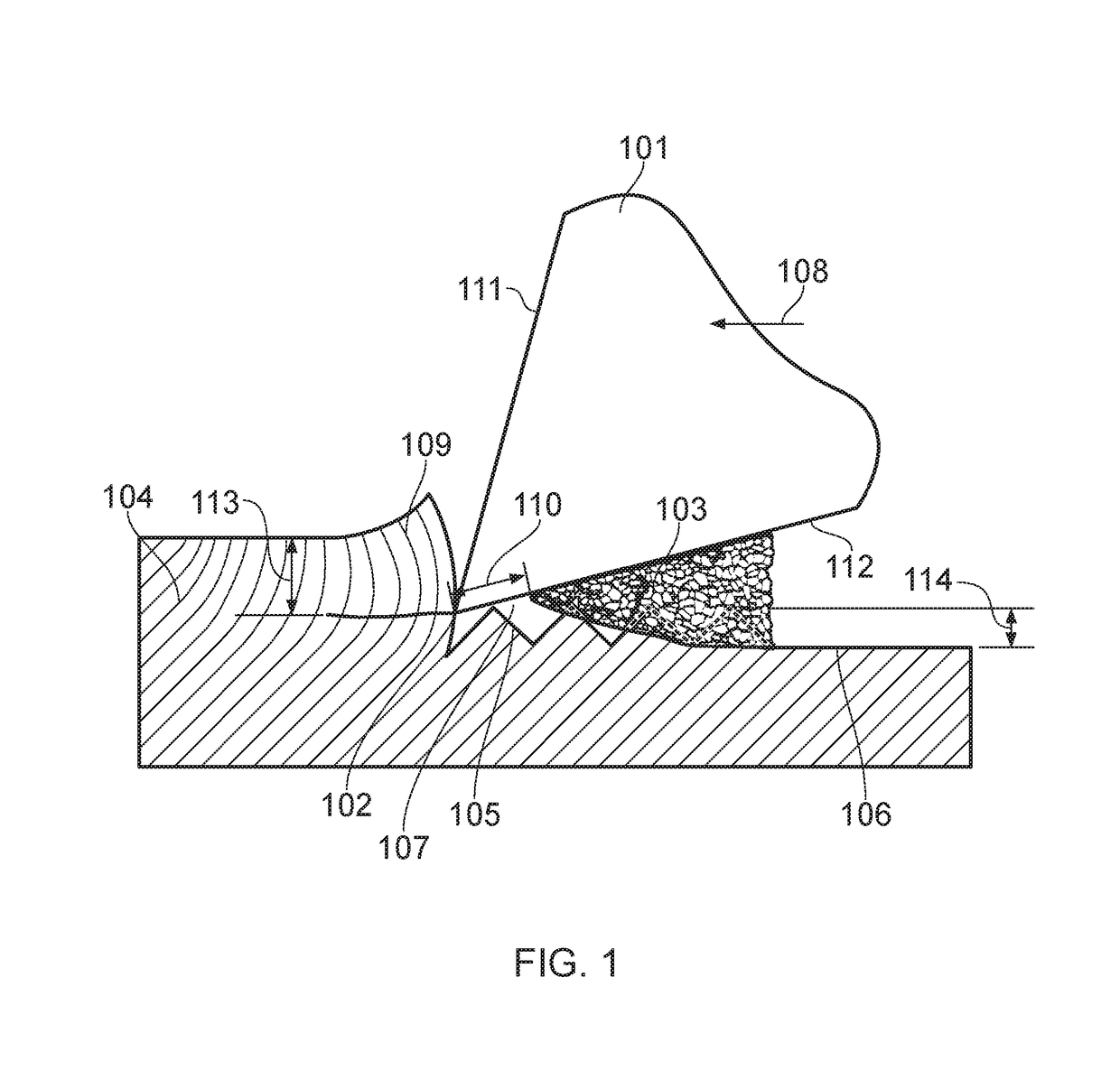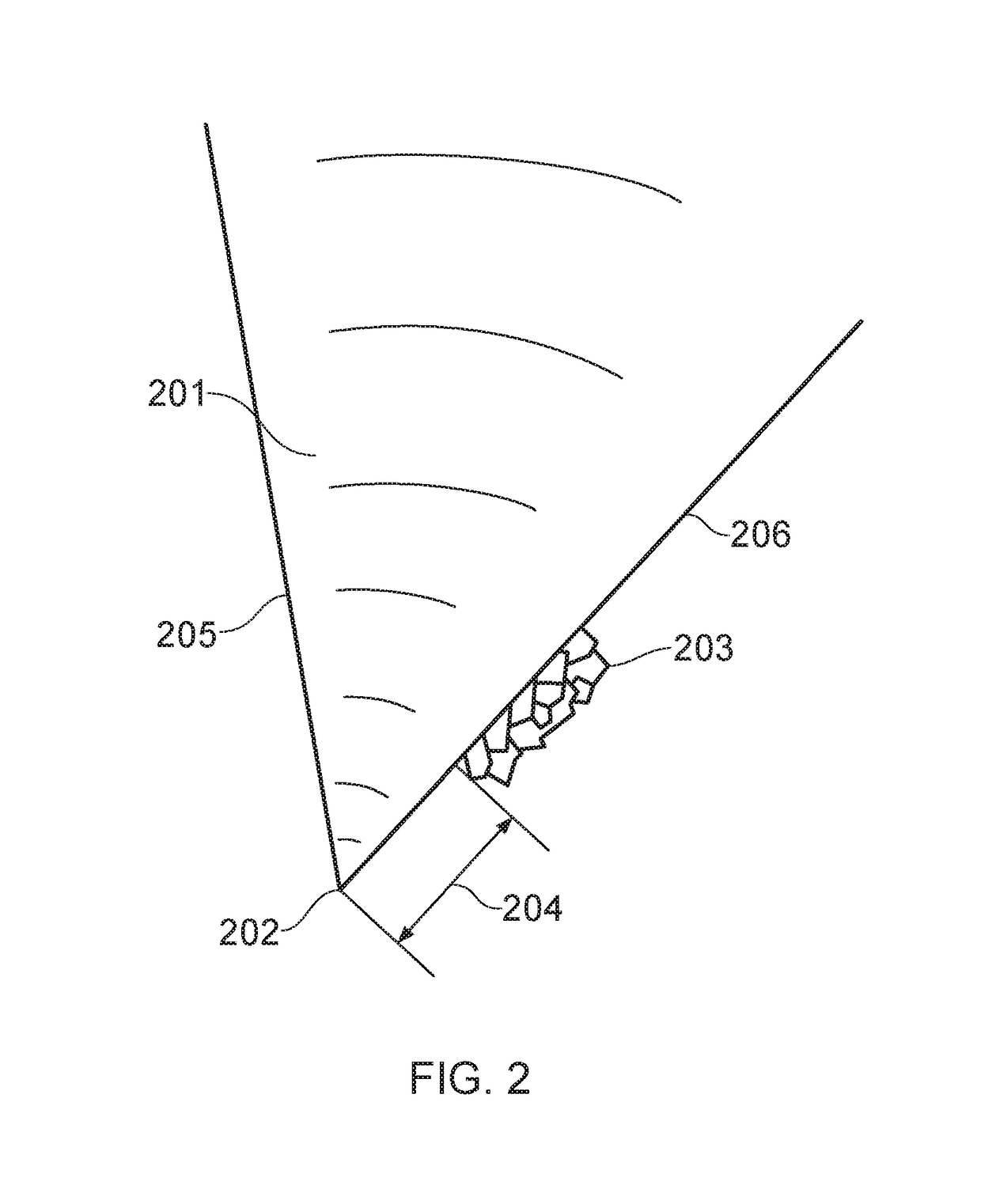Composite machining tool
a technology of composite materials and machining tools, which is applied in the direction of manufacturing tools, grinding devices, transportation and packaging, etc., can solve the problems of difficult cutting of pmc materials, present difficulties in part manufacture, and difficult elastic modulus and physical structure of pmc materials
- Summary
- Abstract
- Description
- Claims
- Application Information
AI Technical Summary
Benefits of technology
Problems solved by technology
Method used
Image
Examples
Embodiment Construction
[0032]FIG. 1 provides a schematic diagram illustrating a section of composite material in the process of machining in accordance with certain embodiments of the invention. The types of materials that can be machined by the invention include Polymer Matrix Composite (PMC) materials such as carbon-fibre and glass-fibre reinforced polymer composites, and so on. These materials will be referred to henceforth as composite materials.
[0033]The tool body 101 comprises a cutting edge 102 and a grinding region 103. The cutting edge 102 is formed at the intersection between a first and second surface 111,112 of the tool body 101. The grinding region 103 is located on the second surface 112 of the tool body 101 and is adjacent to the cutting edge 102. The second surface 112 is commonly known as the clearance surface. The grinding region 103 is characterised in that it is abrasive to composite materials. The cutting edge 102 and grinding region 103 are positioned on the tool body 101 such that a...
PUM
| Property | Measurement | Unit |
|---|---|---|
| length | aaaaa | aaaaa |
| length | aaaaa | aaaaa |
| depth | aaaaa | aaaaa |
Abstract
Description
Claims
Application Information
 Login to View More
Login to View More - R&D
- Intellectual Property
- Life Sciences
- Materials
- Tech Scout
- Unparalleled Data Quality
- Higher Quality Content
- 60% Fewer Hallucinations
Browse by: Latest US Patents, China's latest patents, Technical Efficacy Thesaurus, Application Domain, Technology Topic, Popular Technical Reports.
© 2025 PatSnap. All rights reserved.Legal|Privacy policy|Modern Slavery Act Transparency Statement|Sitemap|About US| Contact US: help@patsnap.com



